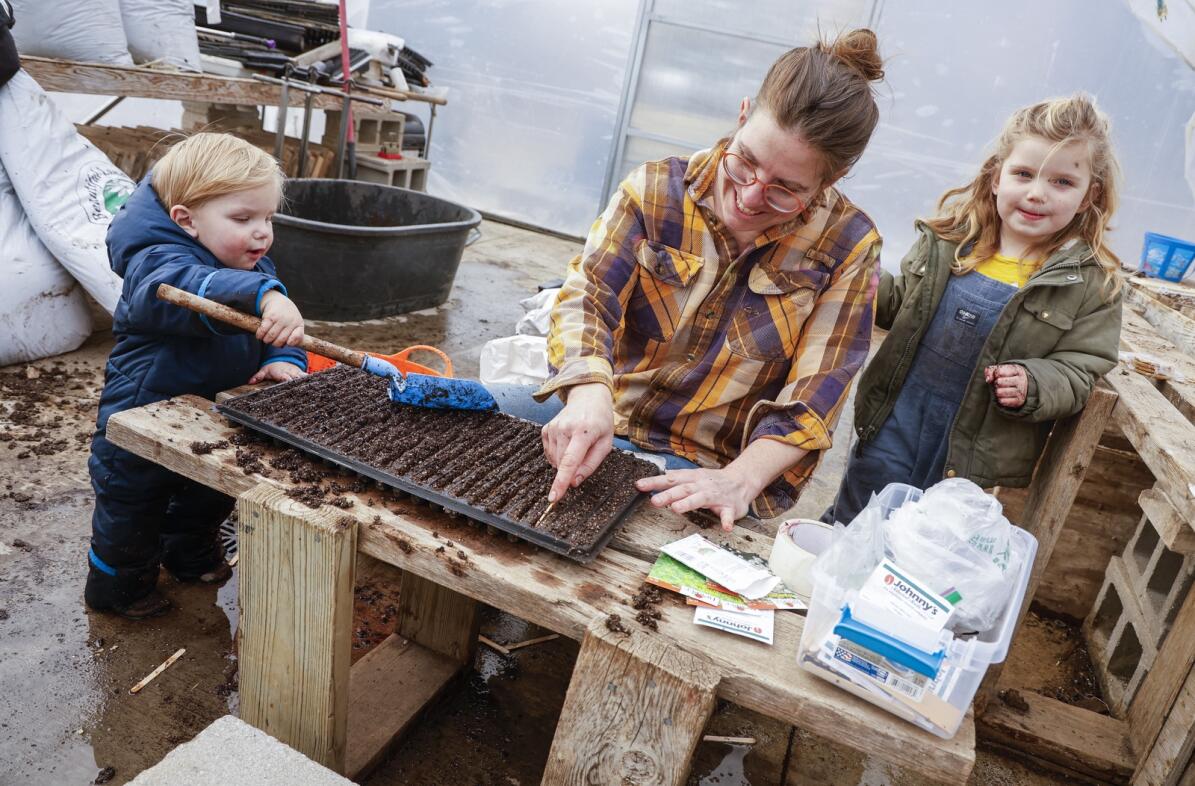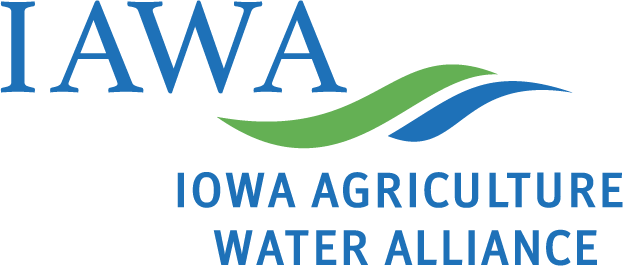A Sensible Trio: Farming, Conservation, and Motherhood
Guest Mother’s Day post by Kate Edwards, Wild Woods Farm
You can find Wild Woods Farm on Instagram, their website, and Facebook.

Our farm is a pocket-sized farm, like the corner grocery you love, because you know where every item is and don’t have to wander far. I own and farm 16 acres of an original homestead in Eastern Iowa. I grow vegetables in a patchwork of fields around our 100-year-old home. I am also a mama to a four-year-old girl and a one-year-old boy. My husband works off-farm, helping out when he can. Neither of us grew up on this piece of land; in fact, it wasn’t in either of our families. When we moved here, we turned this rural residence back into a farm. I grow vegetables through a community-supported agriculture model, where I feed a few hundred families each week of the summer via a subscription service.
On a recent spring day, the kids and I were walking in our farmyard, and Ada, my four-year-old, ran after a piece of trash floating in the wind. “Mama, mama, I caught it!” she yelled, her hands reaching out to grab the small piece of landscape fabric. She skipped over to me and I grabbed it from her precious little fingers, and shoved it in the pocket of my jeans.
“We are just like the Bernstein Bears picking up trash!” I said. We had read a book about the bear family learning about conservation a few weeks before.
“Yes, Mama, we are conservationists!” She replied, quoting a line from the book.
Clarence, barefoot, crawled over, leaned forward on his knees, pushed up on the grass, and wobbled to stand up. I reflected at the freedom he had to walk on the grass without shoes and thought about how grateful I was that years ago when I started the farm, I had decided to grow organically, not spraying the fields or the grass. At the time it was a purely economic decision, now I enjoyed the benefits of not having to worry about the kid’s safety around chemicals.
“Upa upa”. He said, reaching out to me. I carried him to the porch so I could work for a few minutes on my computer, and Ada continued to run in the yard, looking for the first dandelion of the season.
Arriving at the porch I felt satisfied to see signs of spring, the wooden floor cluttered with a bucket of softener salt, a pile of wood, boots- big black and small rainbow-colored ones, old wool clogs, and summer sandals. The weather icy one day, and summery the next.
I pulled the gate across the porch to keep Clarence close and to block off the three steps leading down to the yard. I could hear the wind howling beyond our windbreak of pines to the west, planted by forward-thinking farmers in the 1950’s. Clarence, beelined toward our barn cat, Eloise, and began to play with her. I grabbed my computer from inside the front door and sat down to work. The rest was welcome after a long week of physically intense labor, endless days of pulling landscape fabric and working on two greenhouse projects at friends’ farms the week before.
“Mama, I found the first dandelion of the year!” Ada ran to the porch and handed me the yellow flower over the gate, continuing a tradition my grandma started with me and my cousins on my grandparents’ farm when we were little. A celebration of spring. Grabbing the flower, I briefly smelled it, noting its earthy tones, and placed it in my shirt pocket. Satisfied that I had received her gift, she ran back to the yard, pretending to be an archaeologist looking for treasures.
Eloise, the cat, slipped through the white rungs of the porch railing to the steps where her water was protected from the baby. Clarence, now at the porch door window, was watching his reflection. Ada dug in the yard a few feet from the porch steps in front of the brilliant red and white magnolia tree, its blossoms contrasting against the brown tree trunk and the bright blue spring sky.
Switching between documents on my computer, I thought about the season ahead. We’d been planting seeds in the greenhouse and transplants in the field. Soon, we would start planting cover crops too, one of the many forms of conservation we practice on the farm.
The wind quieted down for a minute, and I noticed the bird calls. Red-wing blackbird, sparrows, and finches that morning. We have a lot of habitat for birds on our farm. We don’t plant the steep hillside, allowing us to avoid erosion and have buffer strips that allow for natural areas.
Finishing my task, I closed the computer lid and thought about how we’d be tasting the first tomato of the season in just a few short months. I picked up Clarence, opened the porch gate, and walked with him towards the greenhouse, grabbing Ada’s hand along the way to check on the latest round of the transplants. It reminded me of when I was a little girl, holding my grandparents’ hands on the way to their garden or the barn. Now many years later, I am a grown woman and a mama. My heart and my farmer’s hands are so full, just the way I’d hoped and dreamed they would be, all those years ago.
Just like we plant seeds in the greenhouse and field, I am planting seeds of conservation in my kids. We are farmers because we care about the Earth and sustaining it for generations to come. Conservation and farming go hand in hand because we can conserve for the next generation, not only for their livelihood now and for the diversity of the landscape, but also for the continued ability for us to use the precious resources of our soil, water, air, and community.
Published May 8, 2025
